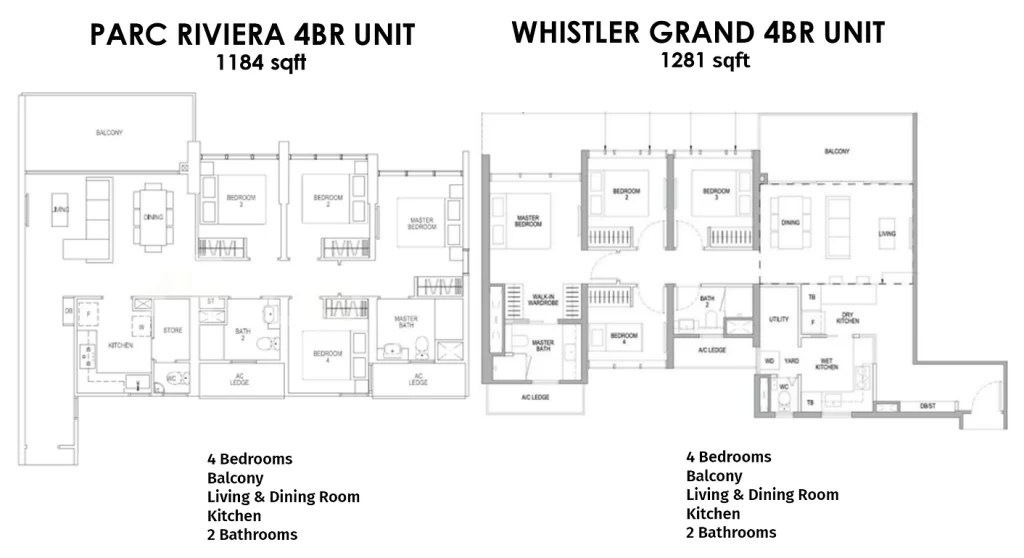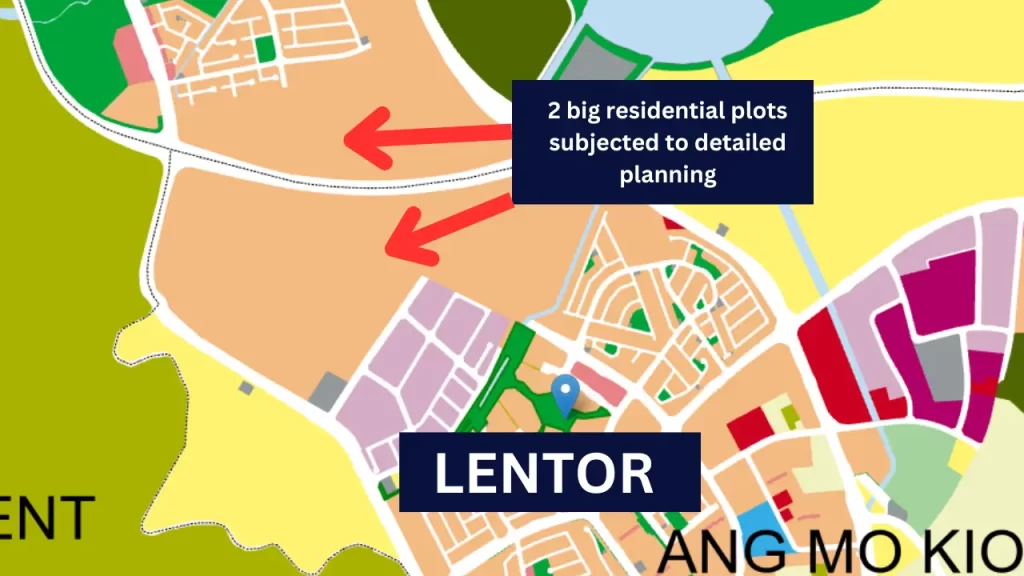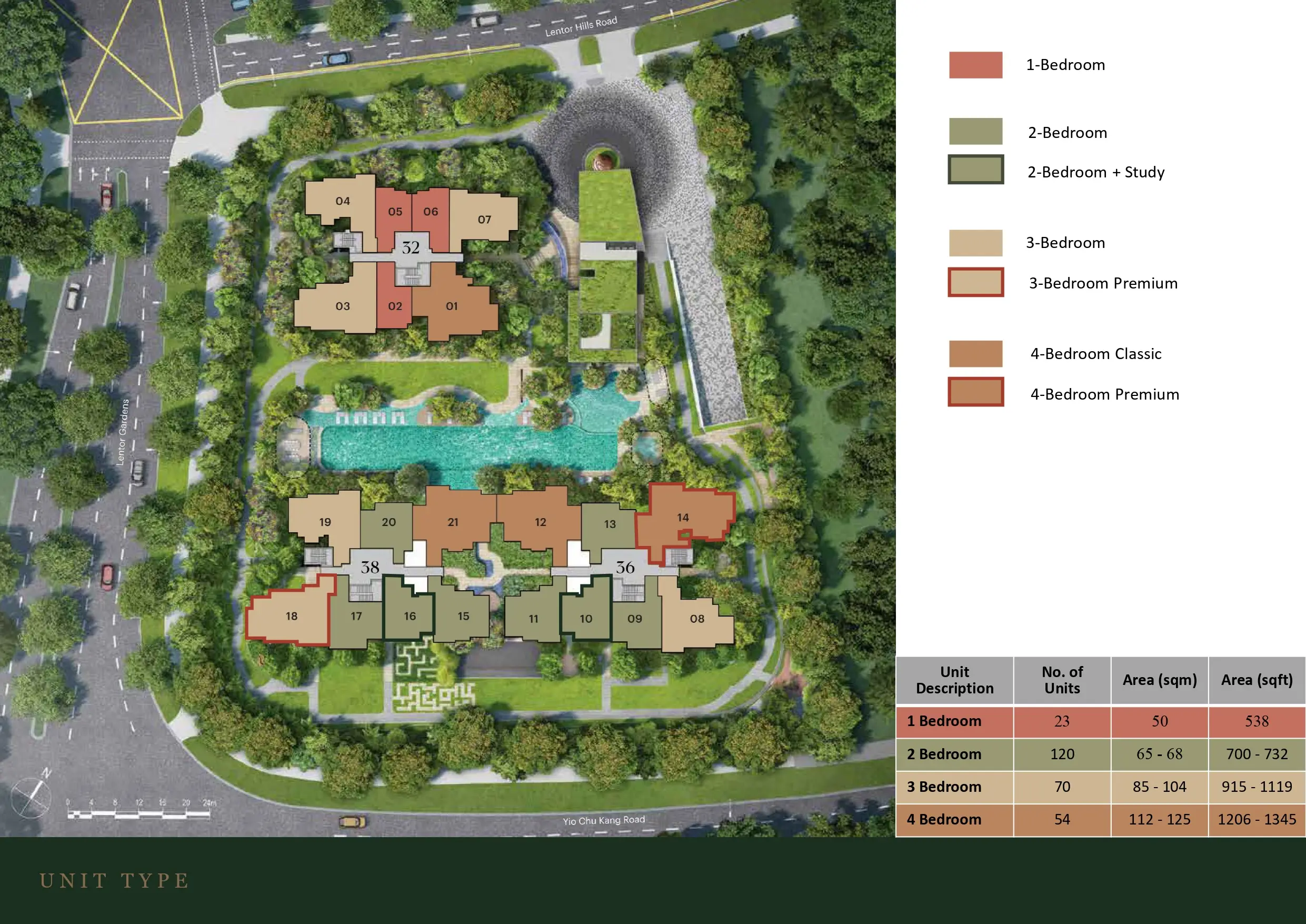Navigating new launch condos, with limited tangible elements for inspection, relies heavily on brochures, site models, and a visit to the show flat. For first-time buyers, this can lead to uncertainty about questions that you should be asking your developers or agents.
Here’s a comprehensive list of questions, delving into less evident but crucial details that could impact your unit and future returns. Embarking on the journey to find your ideal home in Singapore is a pivotal moment. This guide empowers you with curated questions, unraveling intricate property details. From unit specifics to future prospects, these inquiries serve as your compass for confident decision-making.
Unit Specifics
1. Question: What are the unit types available, and how do they differ in size?
Why it Matters: Understanding the available unit types and their size variations is fundamental for tailoring your living space to your specific needs and preferences. This information empowers you to make an informed decision, ensuring that the chosen unit not only meets your current requirements but also aligns with your future lifestyle aspirations. The diversity in unit types allows you to explore options that optimize space utilization, providing a home that suits your unique living preferences and enhances your overall satisfaction with the property
2. Question: Can I see floor plans for specific unit types?
Why it Matters: Access to floor plans for specific unit types is paramount as it goes beyond aesthetics. It provides you with a visual representation of the spatial layout, enabling you to envision how your furniture and daily activities will seamlessly integrate. Examining floor plans aids in understanding the practicality and flow of the space, ensuring that your chosen unit aligns not just with your aesthetic preferences but also with the functional aspects that contribute to your daily comfort and convenience. This information is instrumental in making an informed decision about the suitability of the unit for your unique lifestyle.
For example, looking at this, Whistler Grand might be a better choice for some families as it features a walk in wardrobe concept and comes with a wet and dry kitchen.
3. Question: What is the unit’s orientation, natural light, and view?
Why it Matters: Understanding the unit’s orientation, natural light exposure, and view is crucial for creating a living environment that aligns with your preferences and enhances your overall well-being. The orientation dictates the amount of natural light your unit receives, influencing the ambiance and energy efficiency. Additionally, insight into the view allows you to assess the aesthetic appeal and potential future developments that might impact your surroundings. For some projects, you might be able to use this 3d Interactive Map by Mogul to track sunlight by looking at the shadow cast on the building.
4. Question: Is the condo equipped with smart home features, and if so, what kind of systems are in place?
Why it Matters: Inquiring about smart home features is pivotal in aligning your living space with modern technological advancements. Knowledge of the available systems allows you to assess the level of convenience, efficiency, and connectivity within the condo. Smart home features contribute to a more streamlined and comfortable lifestyle, providing control over various aspects of your home.
Development Specifics:
5. Question: How have the property prices moved since launch date?
Why it Matters: Tracking the movement of property prices since the launch date is crucial for assessing the investment potential and overall value of the property. Understanding the price trends provides valuable insights into the market dynamics and the property’s performance over time. Knowledge of price movements enables you to make informed decisions about the potential return on investment and the stability of the real estate market in the specific area.
This question is extremely important if you are not buying on the launch date.
A compelling incentive for investing in new launches is the strategy of price staging or taking advantage of developer pricing arbitrage. Generally, prices tend to be more favorable during the initial stages of a development and incrementally increase as the project progresses. This temporal pricing structure offers potential buyers a unique opportunity to secure a more advantageous deal based on the timing of their purchase. Observing a predictable and moderate pattern of price increments, ideally with manageable volatility, provides valuable insights into the investment’s potential profitability.
Lets examine the price chart for Developer Sales for Sims Urban Oasis. As you can see, there was a gradual increase of price over the years.

However, when you look at price chart for Developer Sales for Santorini, you can see a dip in pricing in the period of 2017. This is a scenario whereby early buyers end up losing more money than the buyers who entered after 2017.

6. Question: What construction materials and methods are used?
Why it Matters: Inquiring about the construction materials and methods employed is pivotal for assessing the quality, durability, and sustainability of the property especially with the utilization of Prefabricated, Prefinished Volumetric Construction (PPVC). PPVC involves constructing condo modules off-site, complete with all fittings, and then transporting and assembling them on-site. While this method expedites construction timelines, potentially allowing for earlier occupancy and rental income for investors, it comes with certain limitations. PPVC often results in a standardized layout, limiting the versatility of unit configurations. Additionally, the uniformity of PPVC units may restrict homeowners from modifying the layout to suit specific preferences, making it essential for potential buyers to weigh the benefits of quicker construction against the desire for flexibility in design. The earlier completion may allow for quicker occupancy, enabling investors to generate rental income sooner. However, the standardized nature of PPVC units may not cater to those seeking a more adaptable and personalized living space.
7. Question: How is the property managed, and what are the maintenance fees?
Why it Matters: Understanding how the property is managed and the associated maintenance fees is crucial for evaluating the overall cost of ownership and the quality of services provided. Knowledge of the property management approach allows you to assess the efficiency of maintenance and the level of care given to common areas. Awareness of maintenance fees ensures that you can budget appropriately for ongoing expenses. The transparency in this information contributes to your confidence in the property’s upkeep and the potential for a well-maintained living environment.
8. Question: Are electric vehicle (EV) chargers available in the development, and if so, what is the infrastructure and accessibility?
Why it Matters: The presence of EV chargers is increasingly crucial in the modern living landscape. With a growing shift towards sustainable transportation, having accessible and well-designed EV infrastructure not only aligns with environmental considerations but also enhances the convenience and long-term viability of your property. The availability of EV chargers can significantly contribute to the property’s appeal, making it more future-proof and accommodating for residents with electric vehicles. This amenity not only supports a green lifestyle but also ensures that your property remains competitive and relevant in a rapidly evolving real estate market.
Future Developments Impact:
9. Question: Are there upcoming developments planned for the area?
Why it Matters: Inquiring about upcoming developments planned for the area is essential for gaining insights into the potential trajectory of the neighborhood. Knowledge of future projects, infrastructure improvements, or commercial developments can impact property values, community dynamics, and overall livability. Being aware of these plans enables you to make a more informed decision about the long-term appeal and potential appreciation of the property. This question ensures that you are not only considering the current state of the neighborhood but also anticipating its future growth and evolution, contributing to the overall value and desirability of your chosen location.
For example, in Lentor area, we have two big residential plots and these owners might be the potential buyers for your unit in future.
10. Question: How many units are there, and what is the density?
Why it Matters: Inquiring about the total number of units and the density of the development is essential for understanding the community atmosphere and the potential for shared amenities. Knowledge of the unit count provides insights into the scale of the development, while understanding the density helps evaluate the level of crowding and competition for communal spaces. This information ensures that you can gauge the exclusivity and comfort of the living environment, contributing to your overall satisfaction with the property. The balance between unit count and density is crucial in determining the atmosphere of the development and the availability of amenities, making this question integral to your decision-making process.
In conclusion, navigating the exciting journey of purchasing a new launch condo in Singapore requires thoughtful consideration. By posing these comprehensive questions, you empower yourself to make informed decisions about unit specifics, development details, and future prospects. This guide serves as your compass, ensuring a confident and satisfying step into homeownership. Happy house hunting!











